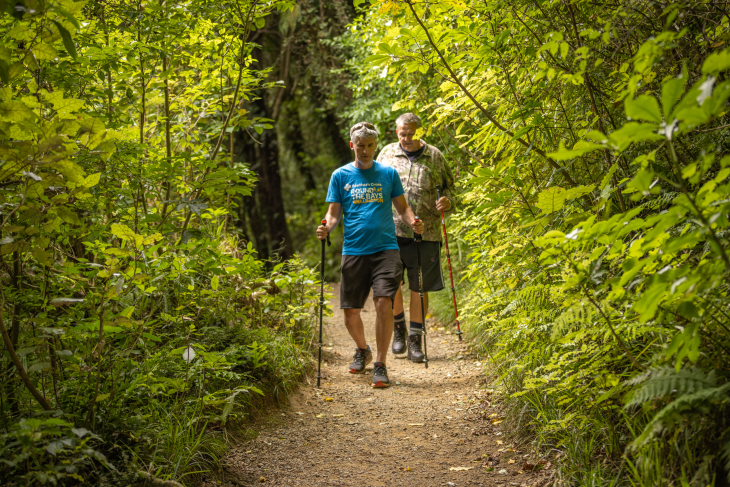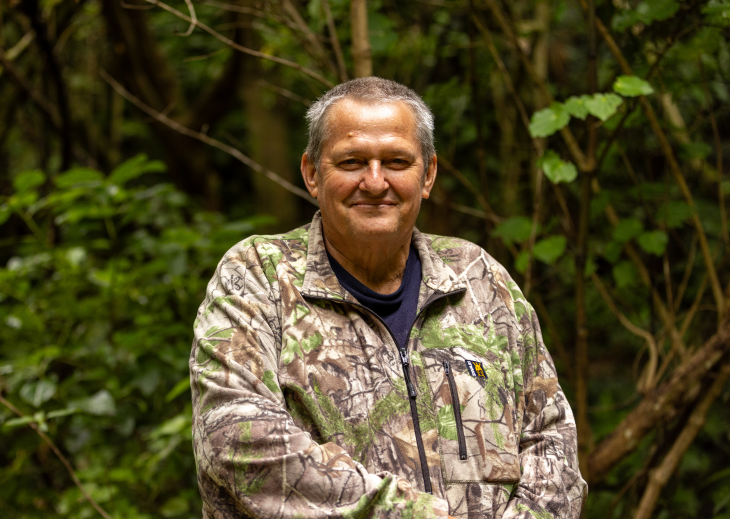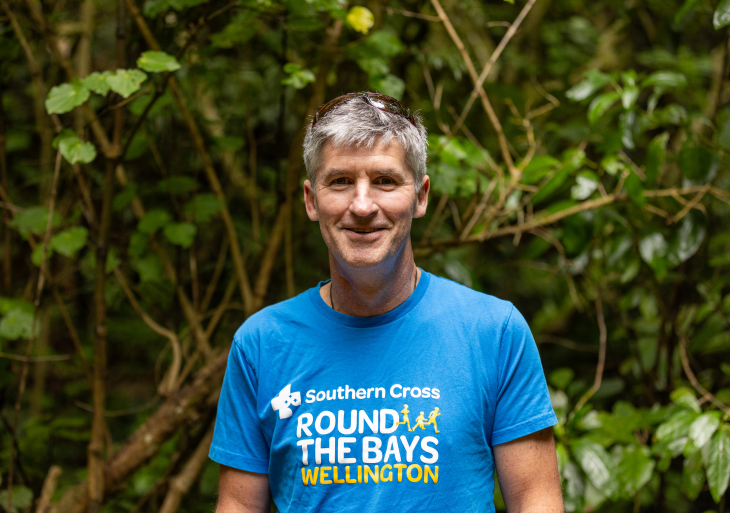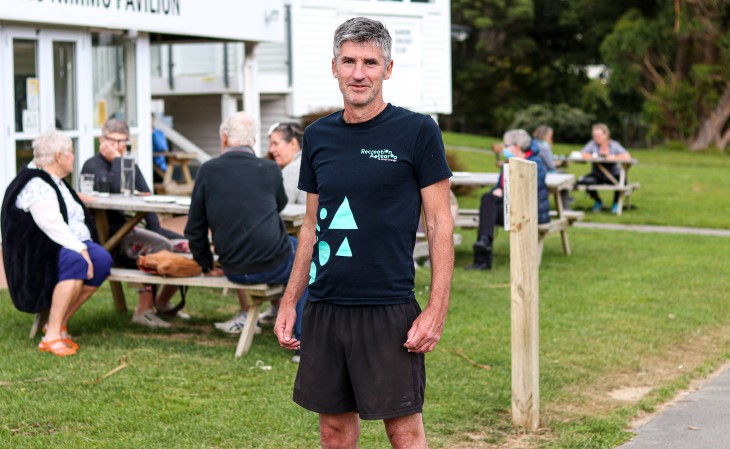Tetraplegic mates take on Abel Tasman track
The lives of Andrew Leslie and George Thompson were turned upside down when they suffered debilitating spinal injuries. Against the odds, they’re now tackling one of New Zealand’s great walks.
Two men who met in the Burwood Spinal Unit – and were told they would likely never walk again – are about to take on the unthinkable.
Tetraplegics and good mates Andrew Leslie and George Thompson will attempt to walk the famed Abel Tasman National Park track this week, from 13 to 17 March.
“We’re doing this walk for two reasons,” explains Andrew, 51.
“Firstly, this is about not only showing to ourselves that we can do it, but to others living with impairments as well.
“We’re also using this walk as a platform to champion better accessibility in the outdoors. It’s a complex problem to solve, but sometimes resolving relatively small issues can make a big difference.
“This is a message we hope to promote through undertaking this adventure.”

Andrew Leslie, left, and George Thompson training for their Abel Tasman walk.
‘A 20 per cent chance to walk again’
The 60km undulating walk will be a huge physical challenge because of the distance, but also due to the fact they’ll be walking for five days straight.
It’s a long way from where they’ve been.
When Andrew was in the Intensive Care Unit, his family were told to expect him to be a wheelchair for the rest of his life.
George was likewise told he probably wouldn’t walk again by the doctors at the spinal unit. At that stage, they never believed a feat like walking the Abel Tasman would be possible.
“I don’t think that would have even been in my head,” says George, 67.
“Four years on from that moment, when they gave me a 20 per cent chance to walk again, to now be about to walk around the Abel Tasman is quite extraordinary.”
Since his injury in 2020, Andrew has made a habit of setting personal challenges.
In 2021, he walked back to Mākara Peak to revisit the scene of his accident. In 2022, he ran 5km around Karori Park and last year he completed an Outward Bound course.
When he called George with the Abel Tasman idea, his mate didn’t hesitate to accept the challenge.
“A part of this for me is to prove to all the people that tell me I can’t do it that I can,” George says.

George Thompson is tackling the Abel Tasman track to prove people wrong.
Humour helps the healing process
Four years ago, the lives of both Andrew and George changed forever.
In Levin, George broke his neck in a farming accident when he crashed his quad bike into a drain in February 2020.
Around a month later, Andrew suffered the same injury in a mountain-biking accident at Mākara Peak in Wellington.
They were both lucky to survive.
“I knew it was serious straight away,” George recalls.
“I heard the crunch in my neck when I went into the drain. I could stand for a split-second and then my legs gave way and I could feel a tingling sensation.
“I remember thinking, ‘This isn’t going to have a good ending’.”
George was flown to Christchurch Hospital where he was admitted to the Intensive Care Unit and was fighting for his life. He would go on to spend six months in the Burwood Spinal Unit.

Andrew Leslie can vividly remember the day of his accident.
While George was coming to terms with his new reality, Andrew had his mountain bike crash.
“I remember the helicopter buzzing overhead and being winched up,” Andrew says.
“I remember the rotor, the noise and the wind through my hair as I went up to the helicopter. It’s very scary to think back on.”
Andrew followed the same stressful journey through ICU and the pair met in the Burwood courtyard.
“I remember thinking straight away that this guy is a real character, and he likes to have a bit of a laugh,” Andrew says.
George was equally taken with his new mate.
“We hit it off straight away and have been laughing ever since.”
ACC provides a recovery boost
While the pair were learning about life with a spinal cord impairment, New Zealand was in the midst of COVID-19. The country was placed under its first ever Level 4 lockdown.
It left Andrew and George with little option but to fully commit themselves to their rehabilitation in the gym.
ACC has played a leading role in both men’s recovery.
“The ongoing support from ACC has been a real plank in my recovery. I simply wouldn’t have achieved what I have without their constant support and help,” Andrew says.
George is just as thankful.
“We don’t know how lucky we are to have a scheme like ACC. For people like us, it’s given us the chance to have a second crack at life.”
The pair never accepted the prospect of not walking again.
“We really pushed each other,” George says.
“We both set the goal of walking out of the Burwood Spinal Unit and to achieve that feat was both incredible and surreal.”

Words of wisdom for others
The constant through their time in Burwood, and now as they get ready for this challenge, has been banter.
“It’s a really challenging place to be as you’re coming to terms with a new reality. Laughter got us through that period, and we’ll be calling on that again on the Abel Tasman track,” Andrew says.
“When things get hard, we’ll be laughing together.”
They’re looking forward to celebrating completing one of New Zealand’s great walks with a cold drink.
And they want to share some advice for any people who have had a spinal cord impairment and are at the start of their journey.
“Keep your chin up,” George says.
“I’m absolutely amazed what progress I’ve made, but you can’t do that without the support of your partner, physio and everyone else. Make sure you say thanks to the people around you.”
Andrew is a believer that you can achieve most goals if you put your mind to it.
“You need to know big things in life are still possible,” he says.
“If you have a dream and a vision in your head, and you really believe in that, then these things are achievable.”





